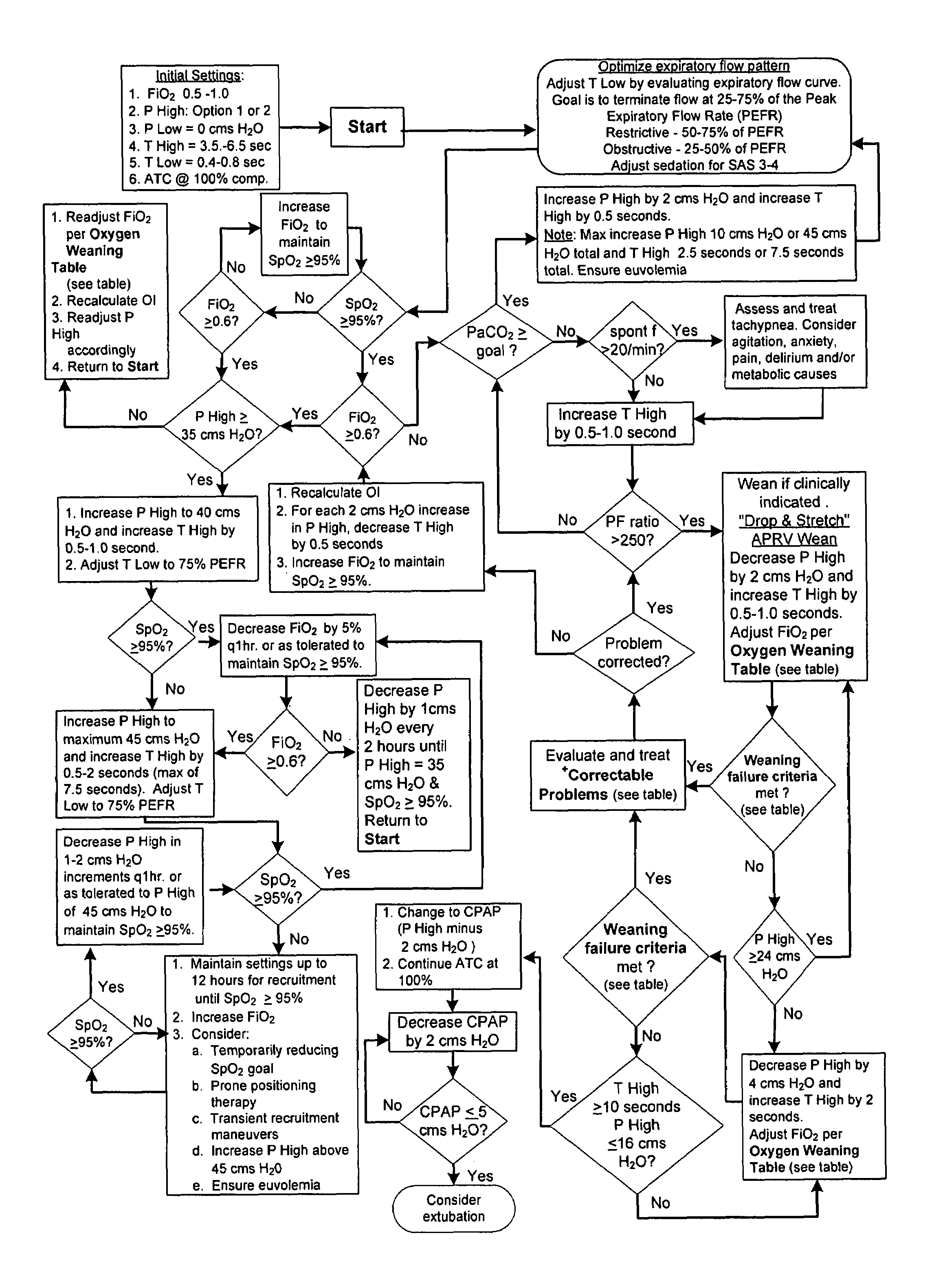Ventilation method and control of a ventilator based on same
a ventilator and control method technology, applied in the field of ventilators, can solve the problems of limited value in determining optimal peep levels, p-v curve utilization, and insufficient reflection of individual air spaces, so as to reduce ventilator-related drug costs, reduce ventilator-associated complications, and increase the number of vent free days
- Summary
- Abstract
- Description
- Claims
- Application Information
AI Technical Summary
Benefits of technology
Problems solved by technology
Method used
Image
Examples
Embodiment Construction
[0042]A patient in need of ventilation is intubated and connected to a mechanical ventilator which, except for being controlled in accordance with the present invention as described herein, can be of an otherwise known type such as the model known as Evita 4 distributed by Draeger Medical, Inc. of Telford, Pa. The ventilator includes pumps, valves and piping as well as all pressure, flow and gas content sensors required to carry out the invention. Operation of the ventilator is governed by a control unit which includes one or more processors. The control unit also includes both volatile and non-volatile electronic memory for the storage of operating programs and data. An operator interface coupled to the control unit typically includes a graphical user interface as well as a keyboard and / or pointing device to enable an operator to select the operating mode of the ventilator and / or to enter or edit patient data and operating parameters such as the pressures, times, flows, and / or volu...
PUM
 Login to View More
Login to View More Abstract
Description
Claims
Application Information
 Login to View More
Login to View More - R&D
- Intellectual Property
- Life Sciences
- Materials
- Tech Scout
- Unparalleled Data Quality
- Higher Quality Content
- 60% Fewer Hallucinations
Browse by: Latest US Patents, China's latest patents, Technical Efficacy Thesaurus, Application Domain, Technology Topic, Popular Technical Reports.
© 2025 PatSnap. All rights reserved.Legal|Privacy policy|Modern Slavery Act Transparency Statement|Sitemap|About US| Contact US: help@patsnap.com



